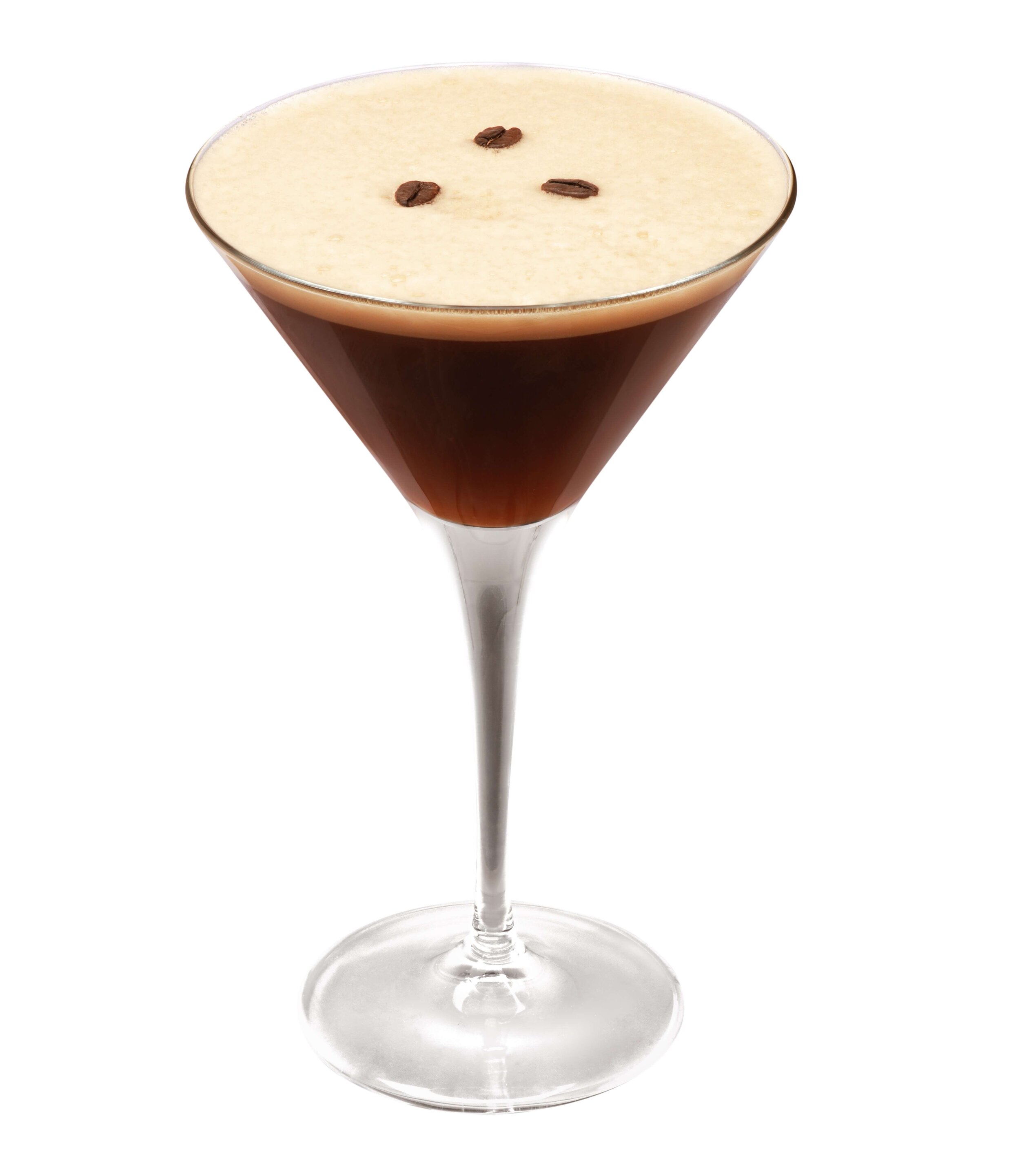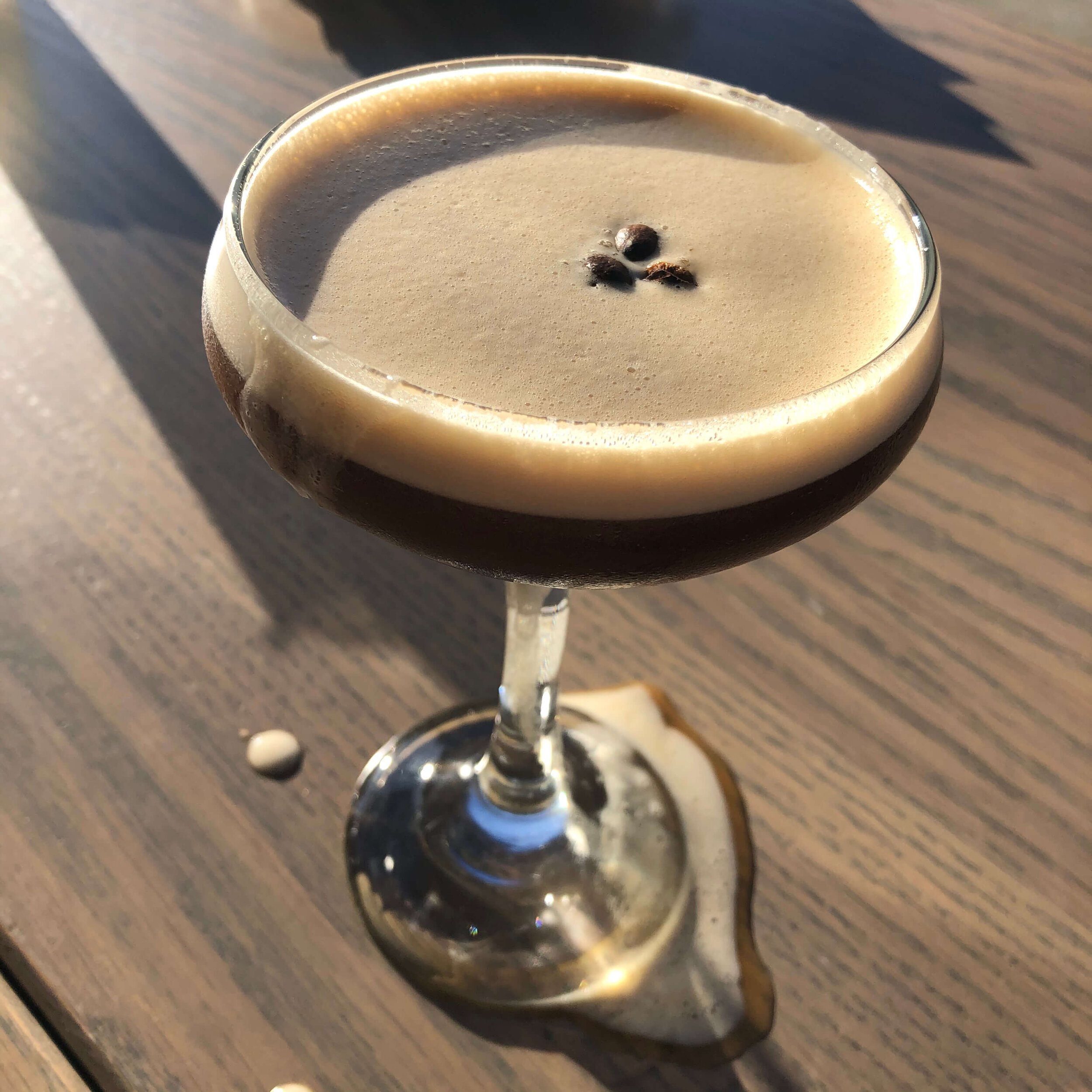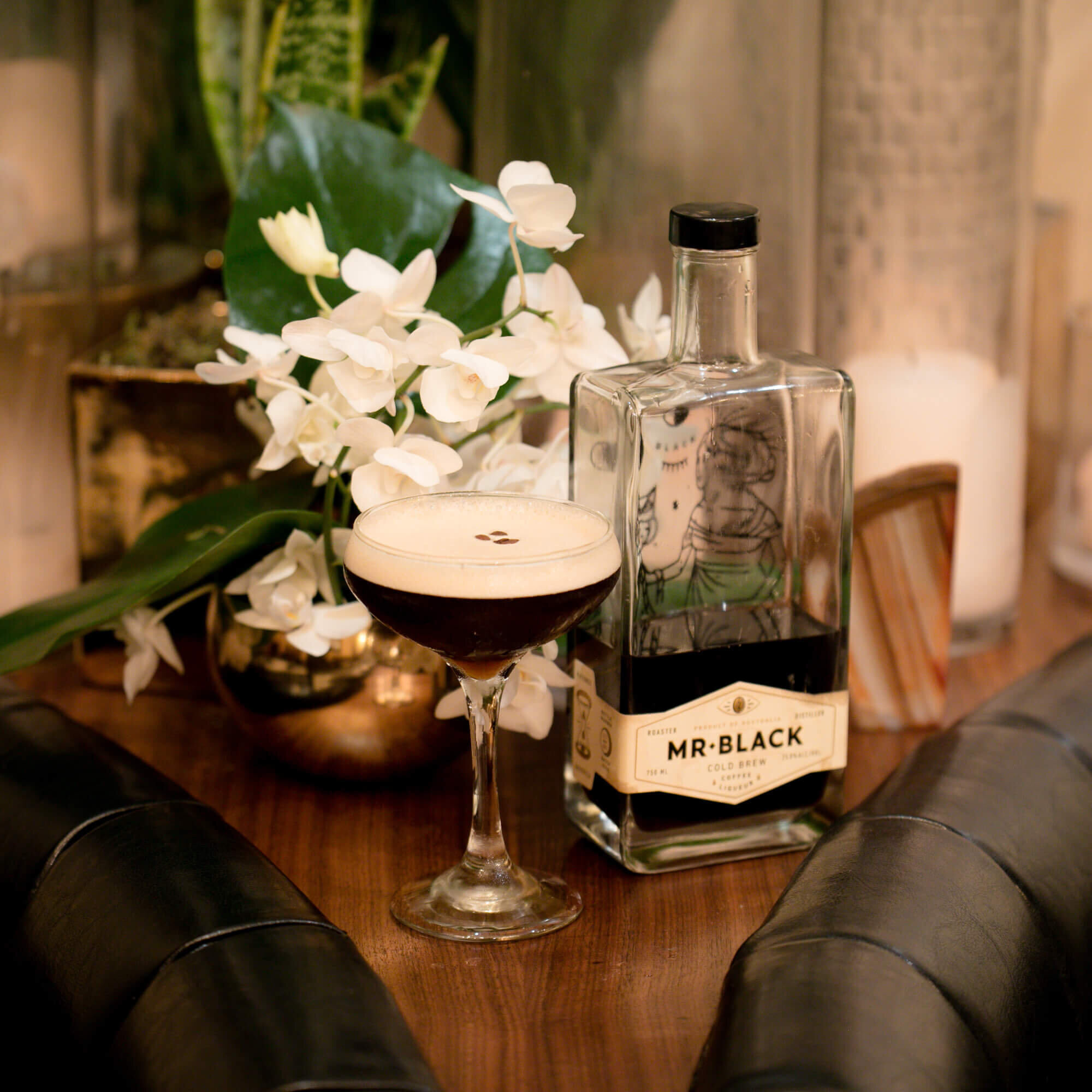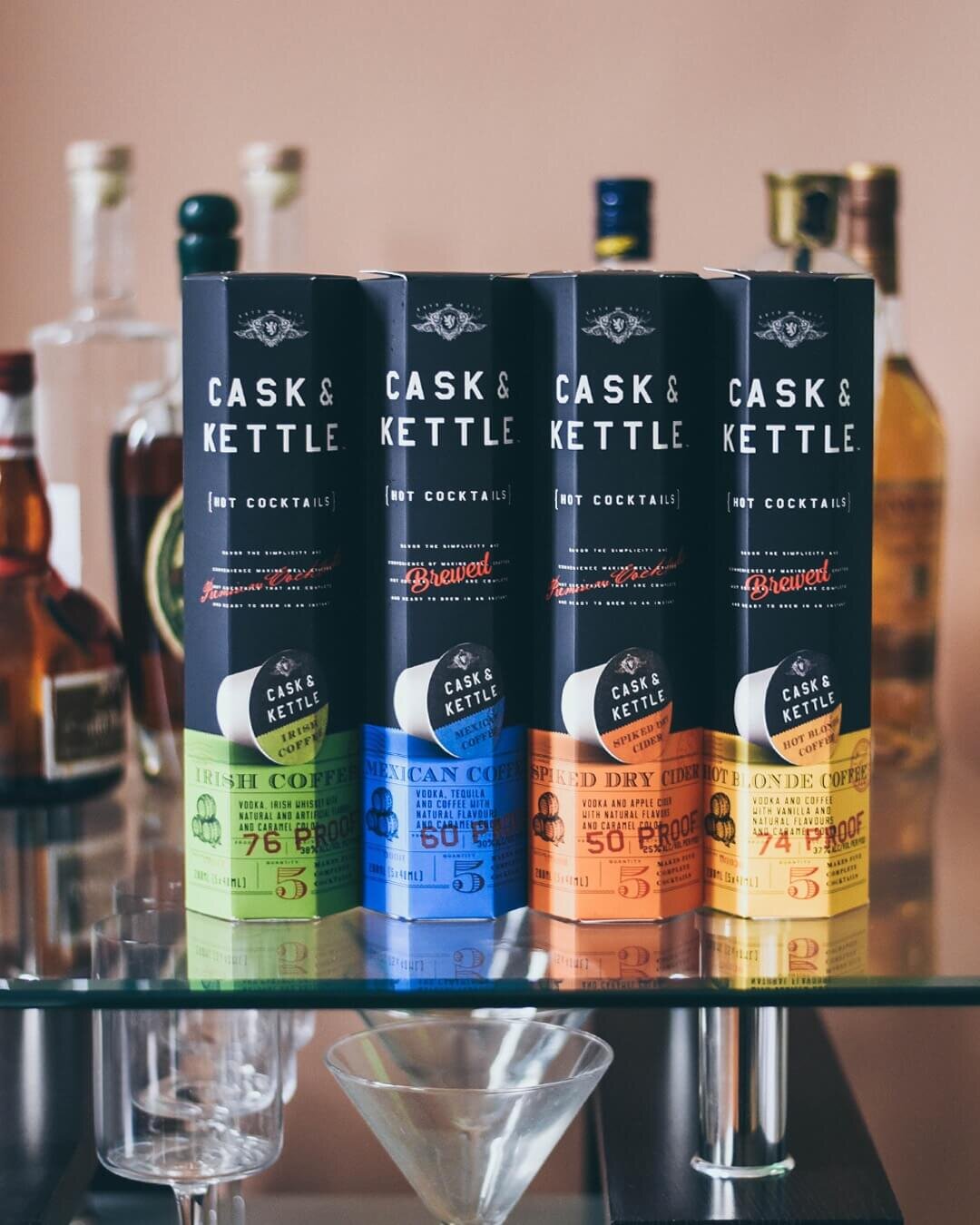Everything Old is New Again: Raise a Glass to the Humble Espresso Martini
Editor’s note: September 29 is National Coffee Day so we thought it was appropriate to take a closer look at the espresso martini, a classic coffee cocktail that dates back to London in the 1980s.
The latest “Sex and the City” iteration is right around the corner, while the 1990s and early 2000s series like “Full House” “The X Files” and “Gilmore Girls” have undergone recent reboots. I couldn’t help but wonder: could cocktails from that era be making a comeback? Enter the espresso martini.
A comforting concoction of espresso, coffee liqueur, and vodka, it hearkens back to a transition between the simplistic juice-and-booze concoctions of the ‘80s (Fuzzy Navel, Sex On the Beach, etc.) and the mega-“martinis” of the late 90s and early 2000s, when Cosmos and Appletinis ruled.
Now, the espresso martini is having its moment, among party crowds (many of whom once thrived on Fireball Whiskey or Vodka Redbulls), and among serious bartenders tweaking the original recipe with a wide variety of specialized ingredients. Earlier this year, The New York Times took notice of the trend, while Just Eat for Business dubbed it the UK’s most popular cocktail. Since then it’s continued to expand in popularity, as the weather cools down and people seek respite from natural disasters, fourth wave plagues, and the general heaviness of the times.
“During the past year, I’ve noticed a lot of the classics are resurfacing,” says Sean Doolan, bar manager for Wilder, a new Marina District spot in San Francisco. Here, the cool kids wash down Kobe burgers, roasted cauliflower, or bone marrow with the bar’s signature Espresso ‘Tini featuring house-made horchata (a sweet, Mexican rice-based drink) along with more traditional ingredients. You’ll also find raucous (as can be these days) brunches and ‘Tini Thursdays menu, implying we’re now in full 1998 Mode.
Better Coffee Liqueur
One big motivator in reviving the cocktail lay in the introduction of Mr Black Cold Brew Coffee Liqueur out of Australia. Produced in batches of only 300 bottles at a time, inside a combination distillery and coffee roastery north of Sydney, Mr Black features (according to the publicity) half the sugar and ten times the coffee (100% arabica, natch) of traditional coffee liqueurs. Elevating the liqueur component with a cold brew based allowed bartenders to revisit the 90s classic with fresh eyes. Americans may not realize it, but the espresso martini was arguably more popular in the UK initially.
“It may have been invented in London in the 1980s,” says Tom Baker, Mr Black co-founder, “but it was perfected in Australia over the past 30 years.” He cites Australia’s deep coffee culture as a reason for the drink’s adjacent popularity. “Though the Espresso Martini has seen renewed interest in the past-half decade in lower Manhattan and Williamsburg, it never really escaped the Aussie bubble until the reopening of bars and restaurants across America after the COVID lockdown. That’s when it shot into the collective consciousness.”
Mr Black kicked off in 2013 in Australia but didn’t hit American shores until 2016 with a big push in 2018. In 2019, the brand began introducing Single Origin expressions as special, limited editions. Suddenly bartenders at top spots around the world, like Employees Only in NY and LA, The Black Pearl in Melbourne, and Manhattan’s Union Square Cafe were whipping up the ‘90s classic.
“The espresso martini is a great cocktail because it gives you almost a full shot of espresso and a balanced amount of vodka, so it doesn’t completely ruin your night,” says Patrick Smith, manager of bar openings, Union Square Hospitality Group, and a former bartender at Union Square Café. “We intentionally dialed back the vodka a little bit in our espresso martini (using just an ounce), because it helps the flavors of the espresso, vanilla and Mr Black really come through. A half ounce of Giffard Vanille de Madagascar is what makes the Union Square Cafe version stand out, according to Smith. “The flavor complements the bitter espresso and sweet Demerara syrup, giving it a more full-bodied flavor that doesn’t just start and stop with espresso and vodka.”
Today’s Espresso Martini
And therein lies the difference between Then and Now: In the ‘90s, the espresso martini was another simple social drink (I encountered my first at a Planet Hollywood on Lake Tahoe around 1992 or so)—easy to make, easy to serve, easy to drink. Today it can be much more than that, while still existing on the plane of casual, stress-free drinks. “Bartenders are proud to put the drink on their menus,” Baker says, thanks to the opportunity for more flavor and character from better and diverse ingredients.
Another relatively new coffee liqueur, Gran Brulot, adds an interesting twist, as it features Cognac aged with Ecuadoran robusta coffee beans. Bottled at 80 proof, it packs the same amount of caffeine as a shot of espresso and a shot of booze, according to the company. It’s practically an espresso martini in a glass.
Similarly, Bomani Cold Buzz is a new, ready-to-drink hard coffee that really only needs a little cream and sugar to draw it into the martini realm. Attempting to stand apart from the crowd, the team at Bomani uses high-quality Arabica cold brew coffee and four natural ingredients and strives to use ethically sourced coffee. Bomani Original pretty much just tastes like unsweetened coffee, while the Vanilla has a hint of sweetness. Since it’s canned, you can bring it along easily for picnics, tailgate parties, or backyard BBQs.
And of course you can always turn to the classics, including Kahlua and Tia Maria, both of which are made with rum and coffee. This year, the latter brand expanded its presence with a Matcha Cream Liqueur using a green matcha tea extract, along with a collection of canned cocktails like the Tia Maria Iced Coffee Frappe. The brand also introduced a new bottle design for its iconic Tia Maria Cold Brewed Coffee Liqueur.
Ingredients Beyond Coffee Liqueur
It’s not simply the coffee liqueurs that are open for exploration. The coffee, spirit, and sweetener are all being upgraded or tweaked, along with an expanding array of mixers. “Our take on the classic has really grown in popularity over the past few years,” says Wilder’s Doolan. “When creating The Wilder Espresso Martini, we wanted to stand out. Pairing it with horchata was our way of doing that.” Wilder’s version also incorporates Tito’s Vodka, Kahlua coffee liqueur and Ritual cold brew concentrate coffee.
“The concentrated cold brew, being bitter, adds the perfect balance to cut the sweetness,” says Doolan. “Kahlua, being a rum-based liqueur, pairs naturally with the horchata.” The result is a creamy, rich, but not cloying escape from the worries of the day.
In general, cold brew coffee seems to be an obvious choice for bars: It can be purchased or prepared with minimal equipment, stores well, and is stronger than most traditional coffees. Bars are able to highlight local producers or take advantage of high-profile products, adding a twist to their coffee cocktails.
Variations abound: Abaca, a new Filipino-Californian restaurant in San Francisco, celebrates the coffee growing culture in the Philippines with the Amadeo (named after a region known as the “coffee capital of the Philippines). Featuring vodka, Oakwood Roasted cold brew espresso, and coffee liqueur, it’s finished off with pandan, a fragrant leaf used in East Asian cooking.
At the new Trade Winds Tavern in Seattle, co-founder Chris Elford says he’s “enamored with our espresso martini.” Built on vodka and Mr. Black, “our usage of condensed milk in the build gives it a lovely creaminess and definitely evokes the flavor profile of a Vietnamese coffee!”
It’s important to remember that the espresso martini hasn’t gotten too big for its britches. In the end, the combination of vodka, coffee liqueur, and coffee is a crowd-pleaser: you’re as likely to find it at your favorite brunch spot or poolside at a hotel, as you are in a dark wood-paneled craft cocktail lounge. More than one party person I’ve spoken with says they’ve eschewed their trendy Rosé wine or go-to Manhattan for an espresso martini.
Getting thirsty yet? Here are three more espresso martini tweaks worth exploring:
Tiramisu Tini
Raised by Wolves
(insert Raised by Wolves photo)
Raised By Wolves (San Diego)
Bartender: Tony Roehr
1 oz Diplomatico Exclusiva Reserva Rum
.5 oz Aquavit
1.5 oz Mr Black Coffee Liqueur
.25 oz Cinnamon Syrup
Combine all ingredients in a shaker with ice. Shake and strain into a coupe. Top with a whipped cream float and cocoa powder.
Expresso Martini
Doma Wynwood (Miami)
2 oz Havana Club Rum
1 oz Espresso
.5 oz Frangelico Hazelnut Liqueur
Simple Syrup to Taste
Combine ingredients in a cocktail shaker with ice. Shake and strain into a coupe or martini glass. Garnish with espresso beans (three for good luck).
Nitro Lemon Espresso Martini
Nolita Hall (San Diego)
Bartender: Corey Tighe
1 oz Uncle Ed’s Vodka
1 oz Western Sons Lemon Vodka
.5 oz Mr Black Coffee Liqueur
.5 oz Lemon Lactose*
1.5 oz Cold Brew Coffee
Combine ingredients in a shaker with ice. Shake and strain into a coupe. Garnish with a lemon peel.
*Lemon Lactose: 1quart water, peels of two lemons, 8 oz sugar, 16 oz lactose. Bring water and lemon peels to a boil. Remove from heat. Add sugar and lactose and stir to incorporate. Strain to remove the peels, let cool.
Dark Orange Espresso Martini
1 oz Orange Vodka
.5 oz Blackstrap Rum
1.45 oz Mozart Chocolate Liqueur Dark Chocolate
1 oz Espresso
Combine all ingredients in a cocktail shaker with ice. Shake and strain into a coupe. Garnish with three coffee beans.
And if all that seems like too much work, consider Cask & Kettle, a new line of spiked coffee pods. Drop one in your Keurig machine (or open and pour into hot water), and you have an instant Irish Coffee, Mexican Coffee or a Hot Blonde which, with a little coffee liqueur, will have you vibing espresso martini. While the drinks are formulated to enjoy hot (the Hot Blonde is tasty, with a rich, mellow coffee and a hint of sweetness), you can also shake them up with ice, and boost the booze, if you like. Be aware though: Cask & Kettle makes its elixirs with decaf coffee, so if you want a kick as well as a buzz, run a bold espresso capsule through your Keurig first.
Now hand me my Jellies and hair scrunchy.







